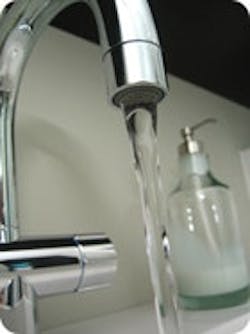Tap water in many large metropolitan areas is polluted with a cocktail of chemical contaminants, according to a study released by the Environmental Working Group (EWG). These pollutants usually don't violate any legal standards, but they often come in potentially toxic combinations that raise serious questions about the long-term safety of drinking the water. Pensacola, Fla.; Riverside, Calif.; and Las Vegas topped the list of major cities with the most contaminated tap water.
In an analysis of 20 million tap water quality tests performed by water utilities between 2004 and 2009, EWG found that water suppliers detected a total of 316 contaminants in water delivered to the public. The U.S. Environmental Protection Agency (EPA) has set enforceable standards for 114 of these pollutants, said EWG.
Another 202 chemicals with no mandatory safety standards were found in water supplied to approximately 132 million people in 9,454 communities across the country. These "unregulated" chemicals include the toxic rocket fuel component perchlorate, the industrial solvent acetone, the weed killer metolachlor, the refrigerant Freon, and radon, a highly radioactive gas.
"The nation's tap water has been compromised by weak federal safeguards and pitiful protection of drinking water supplies," said Jane Houlihan, senior vice president for research at EWG.
EWG said, according to industry market studies, utilities spend more than $4 billion a year on water treatment chemicals alone. Less than one-twentieth that amount is invested in source water protection and pollution prevention, an average of $207 million a year.
"Utilities do the best job that they can treating a big problem with limited resources, but we must do better,” Houlihan said. “It is not uncommon for people to drink tap water laced with 20 or 30 chemical contaminants. This water may be legal, but it raises serious health concerns. People expect better water than that, and they deserve it."
Federal law does not require tap water to be safe for long-term consumption. As a result, EWG said, health officials acknowledge that legally binding contamination limits typically allow exposure to levels of pollutants that present real health risks. For hundreds of other contaminants there are no legal limits at all.
Source: EWG
